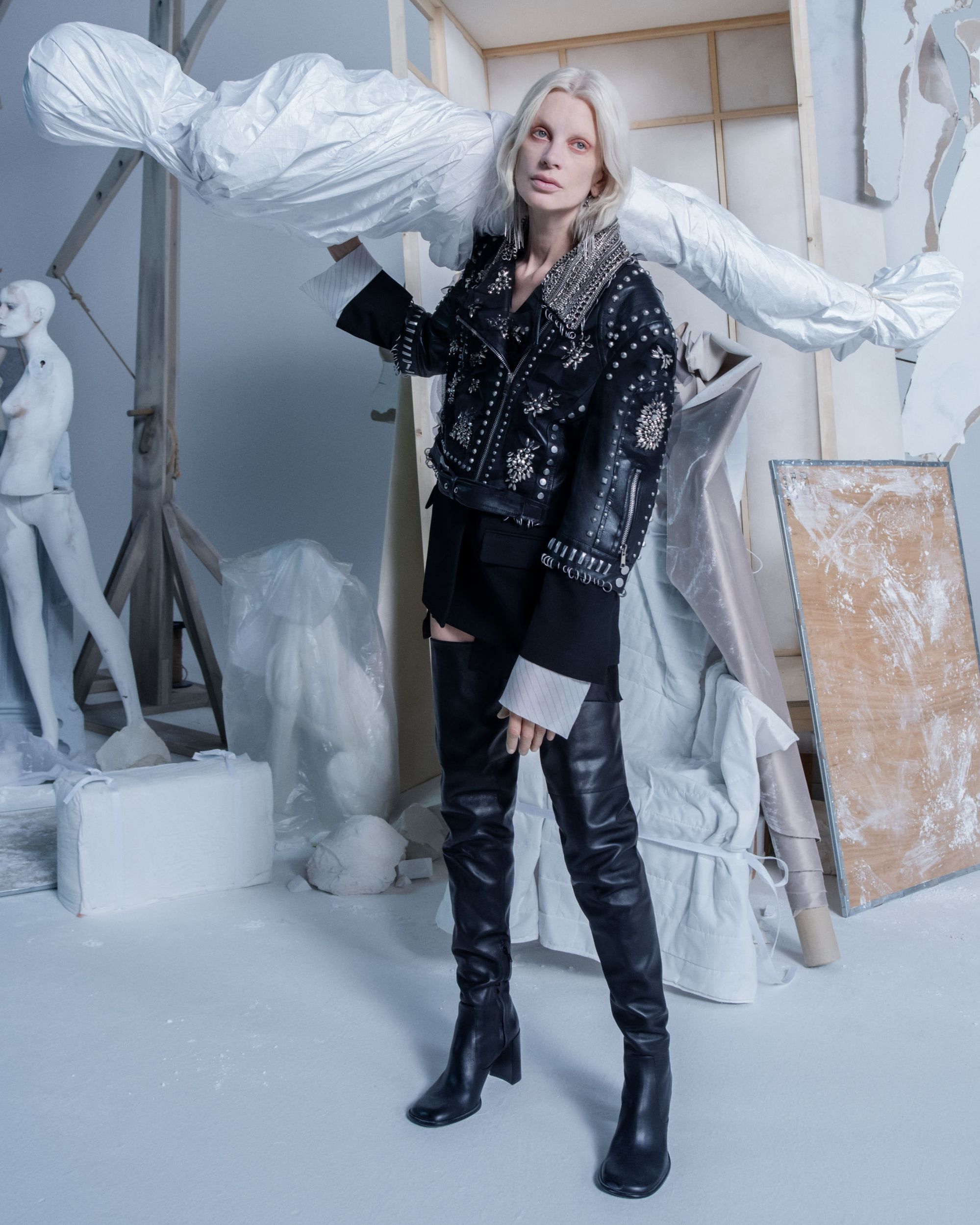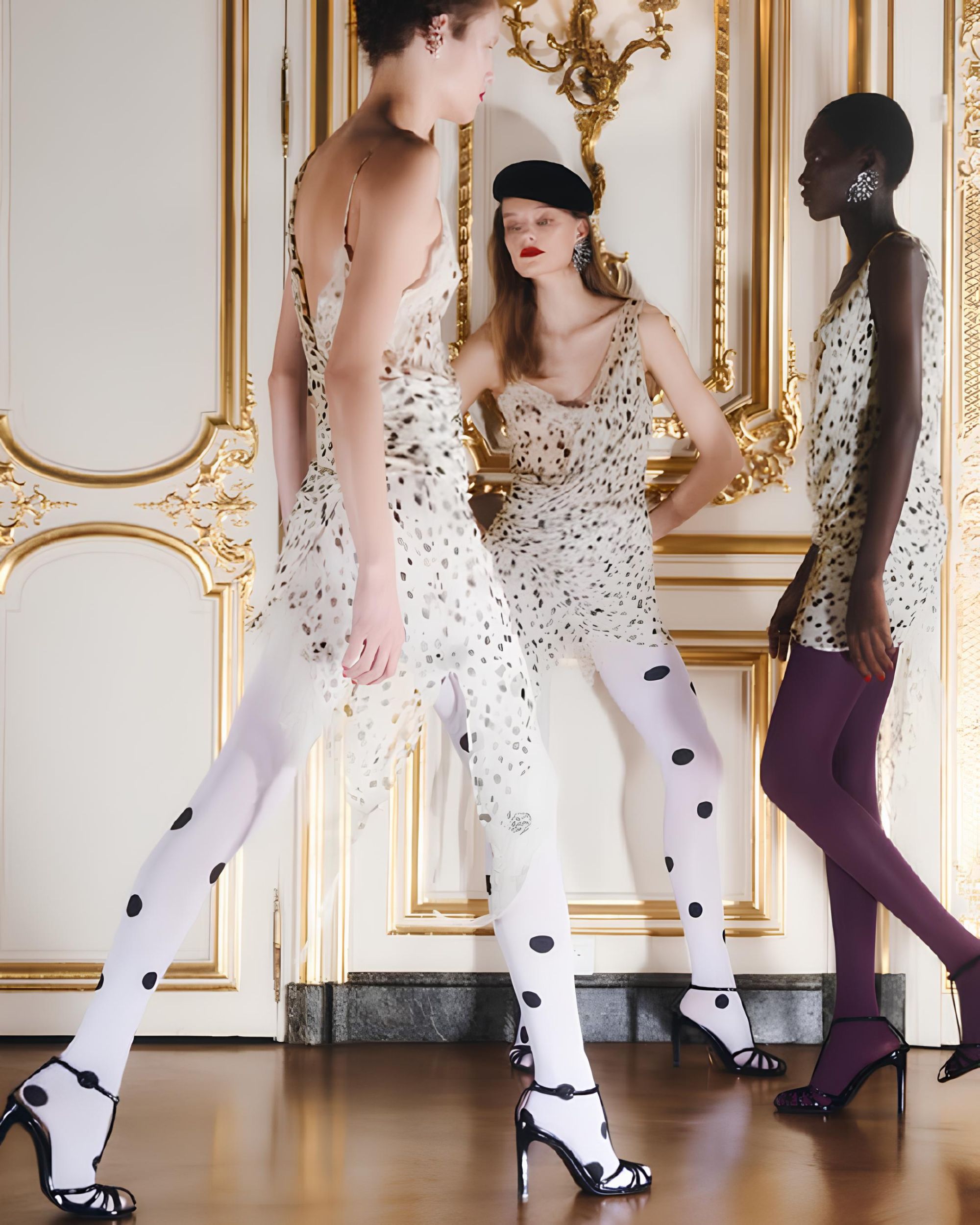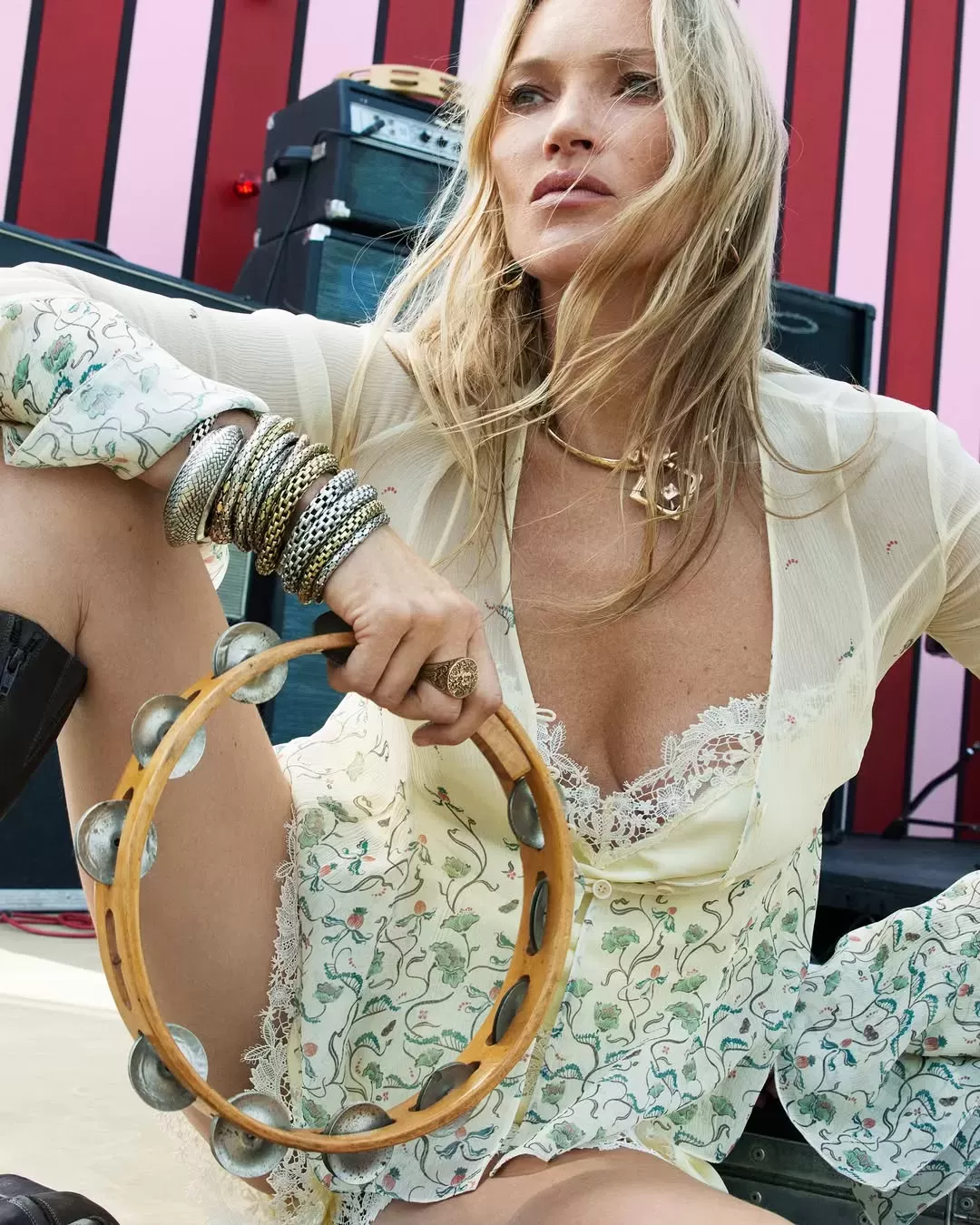
What is the problem with Zara's latest campaign? You have to think twice before hitting that 'publish' button
In the last few hours, #BoycottZara has been the viral hashtag on major social media platforms following the release of the new campaign by the Spanish fast fashion giant titled The Jacket. The images, captured by fashion photographer Tim Walker, depict supermodel Kristen McMenamy against a white background, amidst a set composed of boxes, plaster statues with missing limbs, and mannequins wrapped in semi-transparent cellophane and white veils. Many have interpreted the white veils as a derisive parallel to the devastating images from Gaza, where nearly 18,000 people have been killed in the conflict between Israel and Hamas. The campaign by the brand features white fabrics covering mannequins that seem to resemble traditional Islamic burial shrouds.
According to an official statement released by the brand, the aim of Zara Atelier's advertising campaign for Collection 04_The Jacket was to "re-elevate the paradigms of fashion design to reinvent them," emphasizing the jacket and exploring tailoring techniques, materials used, function, and details. However, the public perception focused primarily on the mannequins. Palestinian artist Hazem Harb has called for a global boycott of the brand, stating that using scenes of death and destruction for fashion campaigns is both "sinister and complicit." Medical influencers Noor Amra and Hina Cheema jointly criticized the campaign, accusing Zara of being aware of the impact and message conveyed by the images, while users have drawn comparisons between the campaign and the devastating scenes in Gaza, further fueling criticism. The creative idea for The Jacket was conceived by Tim Walker and the team in July, well before the outbreak of the conflict. While the web has speculated on conspiracy theories, regarding the intentions for which we lack objective data and probably never will, it is undeniable that the timing of its publication was unfortunate.
This is unacceptable @ZARA @ZARACare fire head designer Vanessa Perilman #FreePalestine #BoycottZara pic.twitter.com/vt8bmxVF7t
— Oshun of Hamas (@GodessOshun) December 12, 2023
A triangle-shaped detail in the background might have reminded someone of the map of ancient Palestine, creating an ambiguous atmosphere compounded by past statements from Vanessa Perilman, Head of Design at Zara. In 2021, she was reported to have directed hateful words towards Palestinian model Qaher Harhash in a private social conversation. The chat was later leaked and quickly went viral, leading to the launch of a petition on Change.org calling for Perilman's dismissal. Meanwhile, as the other half of the social populace celebrates the end of artistic freedom, denying any association between the creative concept developed by Walker and the images of Gaza. In response, the brand withdrew the campaign, stating via Instagram that, "Unfortunately, some customers felt offended by these now-removed images and saw something far from what was intended when they were created. The Zara Group regrets the misunderstanding and reaffirms its deep respect for everyone."
@etantebellecose Se giustifichiamo il brand o l’artista allora neghiamo una cosa fondamentale e cioè che le immagini hanno un potere evocativo simbolico fortissimo che viaggia anche su binari diversi da quelli cercati. Chi produce le immagini non può non tenere conto di questo dato. #arteemoda #zara #gaza #arte #fastfashion #moda Experience (Cover Ludovico Einaudi) - 北昼
In completely different ways and themes, the aftermath of the recent controversy echoes last year's debate on the Balenciaga Objects campaign with its "BDSM-inspired puppets" and the "fake legal documents" - later revealed to be real - present in the background of the launch campaign for the collaboration with adidas. What unites the two events, beyond the scope of the controversies they triggered, is the negligence that brands show in the dissemination of global advertising productions. Through its President and CEO Francois-Henri Pinault, Balenciaga had made a mea culpa, choosing to reevaluate its modus operandi, further supervising the work of the brands within the Kering group and appointing new figures responsible for overseeing the accuracy of conveyed messages. Among them was a new "brand security" manager, tasked with examining major advertising campaigns, questioning them, and evaluating how they might be perceived and criticized by the global public.
In an era where the spread of fake news and AI-generated content is challenging to distinguish from real ones, the new challenge for brands is to gain control not only over the dissemination of their content but also over the various messages that these might evoke in audiences worldwide and their potential distortions or subjective interpretations. In the age of social media and the plurality of perspectives, for Zara, the creation date of a project is no longer an acceptable excuse, especially if the implications of that project are translated into the present. Communicating with a global audience is a titanic challenge, especially since the perception of an image for a European could be completely different from that of someone living in the Middle East. However, given today's geopolitical climate, the need to discuss, empathize, put oneself in others' shoes, or at least assess until the last moment before publication whether a certain image may evoke unpleasant or ill-advised associations is becoming increasingly evident. As seen in the past, these missteps never stay confined to the abstract realm of reputation but translate into millions of euros in lost sales. And history teaches us that it's better to prevent than to cure.















































